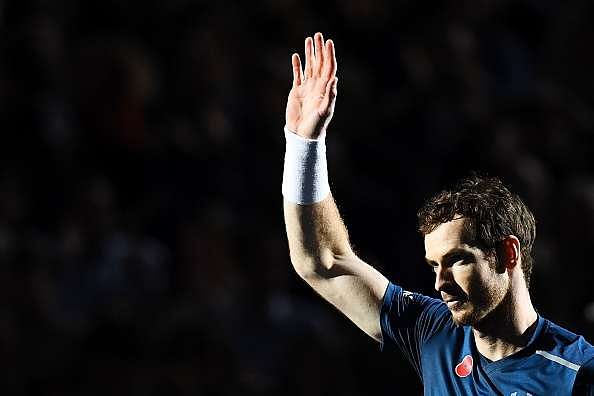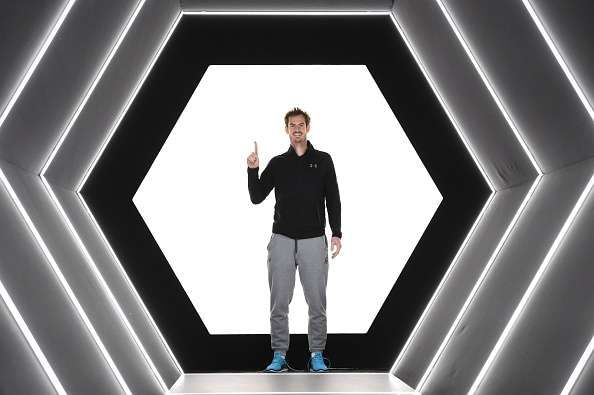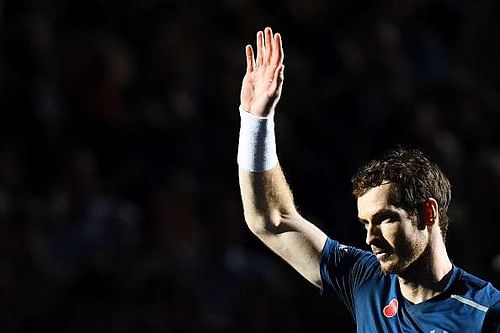
It's been a hell of a journey for new World No. 1 Andy Murray, but would anyone have it any other way?
In one way, Andy Murray's journey to the World No. 1 ranking was exactly like his tennis: long-drawn out, occasionally hopeless, frequently creative, and always exhausting.
In a typical Murray rally, you'll see his opponent taking the first initiative. Things start looking bleak early for the Scot as he is backed into a corner. But he somehow stays in the point with one athletic get after another.
The opponent, frustrated at being unable to find the winner, starts to tire and lose focus. Murray begins to get a bit of a foothold in the rally, and tries every trick in the book to turn things around. But the opponent still has the upper hand, and knows that he can finish things off by pulling the trigger at the right moment.
That's exactly what he gets into position for; with an open court before him, he fires yet another thumping forehand in the hope of landing the knockout blow. Murray is nowhere in sight, and has all but conceded the point. We get ready to stand up and applaud the opponent's shot-making, and politely acknowledge Murray's gutsy but ultimately futile fight.
But we haven't fully accounted for Murray's never-say-die spirit. Out of the corner of our eye, we see the Scot sprinting at warp speed, eyes bulging crazily and arms flailing wildly, trying to make one last desperate passing shot.
He makes it.
That's pretty much how Murray's assault on the No. 1 ranking went down too. Djokovic took a huge early lead (read 8,000+ points), and by June, Murray was hanging on by the tips of his fingernails. But the Scot persevered, and somehow remained in the race.
Heading into the fall Djokovic had started looking tired, but he still had the upper hand; all he needed was one big title win to seal the deal. Despite Murray's repeated counterpunches, a month ago it looked like he had all but conceded the fight: he had to practically win four tournaments in a row to dethrone Djokovic.
He won them.
Just like that last, stunning passing shot in the rally, Murray conjured the impossible in the race to No. 1 too. And just like the speed of his final sprint, the rate at which Murray got there down the home stretch left everyone fumbling for words. At one point he was racking up points faster than we could do the various calculations and permutations.
Of course, it has helped that Djokovic has been doing his best impression of a heartbroken drunkard all this while. Okay maybe that is an exaggeration, but since his cathartic Roland Garros victory in June, the Serb has won just one title – and has lost to players like Sam Querrey, Roberto Bautista Agut and Marin Cilic (the last defeat came on the back of an unbeaten head-to-head streak of 14 matches). He may have had the upper hand in the rankings all through the last six months, but there's no denying that all is not well in the Djokovic camp.
Still, as the old tennis adage goes, you can only defeat who's in front of you. It's not Murray's fault that Djokovic failed to show up for any of their slated meetings in the last five months. The Scot's only job was to defeat everyone who stood across the net from him, and by golly did he do that with the precision of a neurosurgeon.
Since his defeat to Rafael Nadal at the Monte Carlo Masters, Murray has reached 11 finals in 12 tournaments (the only exception being the US Open), winning eight of them. That kind of consistency is not normal; it only looks normal because we've been spoilt by the sheer brilliance of Federer, Nadal and Djokovic in the last decade.

Casual tennis fans may wonder why such a big deal is being made about Murray's achievement. The Scot has dominated sports headlines all over the world the last two days, and the British media has gone absolutely bonkers – with some even suggesting he should be ranked among the five best players of all time (spoiler alert: he shouldn't).
It's not unreasonable to question whether we are going overboard with our Murray mania; after all, the No. 1 ranking hasn't always been the surest indicator of the best that tennis has to offer. For instance, before mid-2012 (which is when Serena Williams started taking the non-Slam tournaments seriously), the No. 1 ranking in women's tennis seemed more like a lottery than a reward for consistent dominance. We had the Ana Ivanovics, Caroline Wozniackis, Dinara Safinas and even the Jelena Jankovics taking turns at the throne, without ever convincing anyone that they were the best player on the planet.
But in this golden era of men's tennis, things have been different. From February 2004 to November 2016, only three players held the No. 1 spot – and each time the top ranking changed hands, it felt like an epochal moment. Nadal taking over from Federer in 2008 was a true changing of the guard, while Djokovic taking over from Nadal in 2011 (and again in 2014) indicated a sureshot shift in the balance of tennis power.
Murray usurping the throne now is not on that same scale of momentousness, at least not given the current circumstances. For all we know, Djokovic could regain his mojo after a few long hugs, and may yet end the year 2016 ranked No. 1 – all he needs is to outperform Murray at the World Tour Finals in London.
But make no mistake, Murray's rise to the top is a story that won't be forgotten any time soon. He has spent bucketloads of sweat, blood and tears to get here, and it'd be hard to find anyone with even half-decent knowledge of the game who would begrudge the Scot the praise he's currently getting.
In an era of unparalleled excellence, Murray has toiled hard and long and diligently. But he has often been pipped to the post by the three GOAT contenders who all somehow conspired to play tennis at the same time. If Nadal didn't get him, Federer did. And if Federer didn't get him, Djokovic did. Despite playing some of the best tennis the world has ever seen, Murray often had to be content with the bridesmaid's tiara, never the bride's crown.
Too often.
As one Brit told me, Murray's TV credits will now get an automatic upgrade. No longer will he be referred to as ‘Britain's No. 1’ or ‘Grand Slam champion’. (For the uninitiated, an athlete’s TV title is a big thing in the UK; they have clung on to ‘former Wimbledon semifinalist’ for Tim Henman longer than anyone cares to remember). Murray will now, and until eternity, have the words ‘World No. 1’ written alongside his name. And that isn't too shabby a reward for a decade spent in the shadows of the Big 3.
"It's been many years of work to get here. It's been such a difficult thing to do because of how good the guys around me have been," Murray told BBC immediately after he had cemented his top ranking.
How about that line as a contender for understatement of the year? The difficult has been made to look routine by this generation of tennis greats, and Murray's path to glory has had ‘difficult’ written all over it. You could see that when he withstood Jo-Wilfried Tsonga's absolute best in the Wimbledon quarterfinal, when he laboured to a painstaking victory over Juan Martin del Potro in the Olympics finals, when he scrambled like a madman to save five consecutive set points against Tomas Berdych in the Paris quarterfinals.
Nothing has ever come easy for Murray. Even in the year he was playing the best tennis of his career, he was thrown a curveball by fate (which also goes by the name ‘ATP’) – he would get no ranking points for his Olympic gold, so he'd have to put in that extra yard of effort if he hoped to catch up to Djokovic.
But would he have it any other way? It's not Murray's style to be a powerful front-runner and canter to authoritative victories. He'd rather put himself – and his fans – through the ringer, and suffer through hours of torture before escaping by the skin of his teeth.
A decade of his tennis has shown us that many times over. And I, as a fan, wouldn’t want to have it any other way either.
